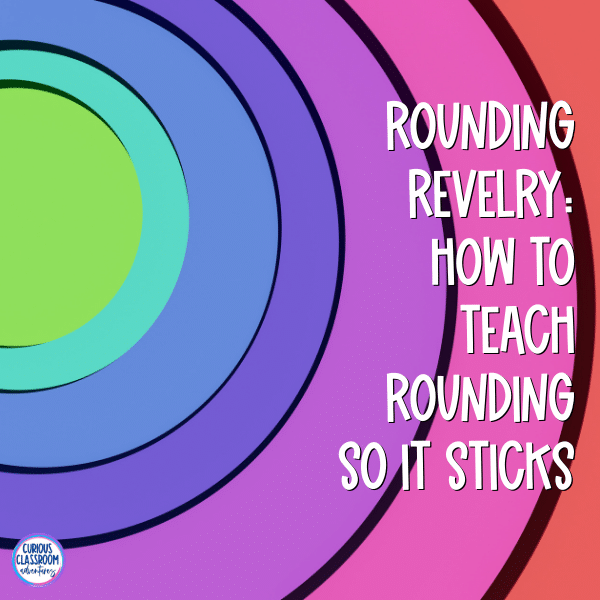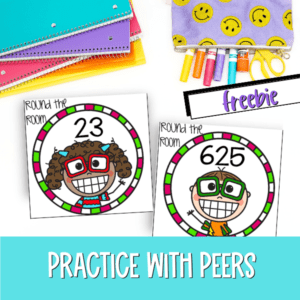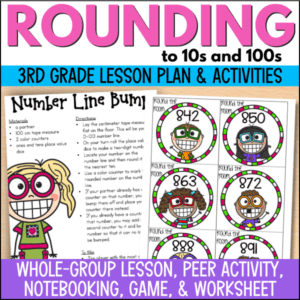Figuring out how to teach rounding numbers so that students actually remember it and consistently do it correctly can be tricky, but fear not! With a touch of creativity and a dash of interactive fun, your students will soon become captains of rounding.
How to Teach Rounding Step 1: Exploring the Rounding Realm
To set the stage, explain to your eager learners that sometimes, we don’t need the exact count of items; we just want to know “about” how many. Enter rounding, our trusty navigator in the mathematical seas! For a little fun and nonsense, we’re going to make today’s lesson a sea-faring adventure. Start by emphasizing the ease of working with sets of ten or hundred, like the friendly neighbors 30, 40, 50 or 300, 400, 500.
Mapping the Waters:
-
Number Line Adventure:
- Equip your crew with creativity as you draw a 30-40 number line in blue and simple ships on each end of the number line with 30 written on one sail and 40 written on the other.
- Together, plot the number 33. We can pretend that 33 is drowning in the ocean and needs to be saved by the closest ship. Encourage discussions about its proximity to 30 and 40. Which boat can he swim to the quickest?
- Next, introduce the mischievous 35, right in the middle! Discuss the rounding rule: when in doubt, round up. Extend this sea voyage to larger numbers, like the more majestic ships that have sails labeled in the 500 to 600 range, then practice rounding numbers like 572 and 549.
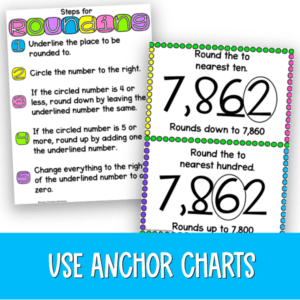
-
Anchor Charts:
- These rules for rounding take awhile to sink in, so help students secure their anchor with a “Steps for Rounding” anchor chart. Review each step with your budding sailors, ensuring they are ready to navigate the rounding seas.
How to Teach Rounding Step 2: Activities to Set Sail
Round the Room Expedition:
- Scatter signs for 20, 30, 40, and 50 in corners of your classroom. Arm your sailors with 2-digit number cards each with a number between 15 and 54. On your signal, let them embark on a journey, trading cards with thier fellow mateys. When you say “Ahoy” everyone should look at the card they are holding, round it to the nearest ten. Extend the expedition to hundreds with signs for 600, 700, 800, and 900 and number cards between 550 to 949.
Great News! You have enough to do figuring out how to teach rounding, but there is no need to make the signs and cards for this rounding game, you can grab a free copy of everything you need right here!
Rounding Pockets Voyage:
- Provide your sailors with the tools to create rounding pockets in their interactive notebooks. Cut, glue, and round! Sort numbers based on their destination and whether they rounded up or down. A pocketful of rounding treasures awaits! You can grab a done-for-you set of those here.
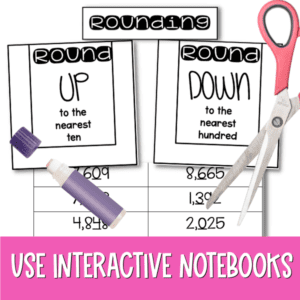
Number Line Bump Quest:
- Unroll the centimeter tape, transforming it into a 0-100 number line. Let the dice roll guide your sailors as they locate, round, and mark numbers. A game of bumps and locks ensues, with counters marking conquered territories. Victory awaits the sailor with the most secure markers!
- Directions:
- Lay the centimeter tape measure flat on the floor. This will be your 0-100 number line.
- On your turn roll the place value dice to make a two-digit number.
- Locate your number on the number line and then round it to the nearest ten.
- Use a color counter to mark the rounded number on the number line.
- If your partner already has a counter on that number, you may bump them off and place your counter there instead.
- If you already have a counter on that number, you may add a second counter to it and lock that number so that it can no longer be bumped.

How to Teach Rounding Step 3: Assess, Review, & Reteach
Don’t forget to have your sailors swab the deck by completing a little paper and pencil practice for rounding as well.
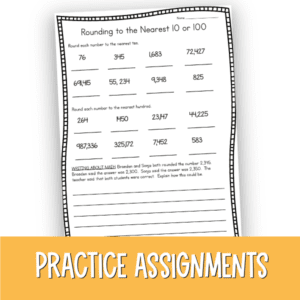
As you guide your crew through these rounding escapades, the once-murky waters of how to teach rounding will transform into a sea of clarity and understanding. May your compass always point to mathematical success!
Of course, these done-for-you rounding lessons and place value unit will answer all your questions about how to teach round and make for smooth sailing waters as well!

